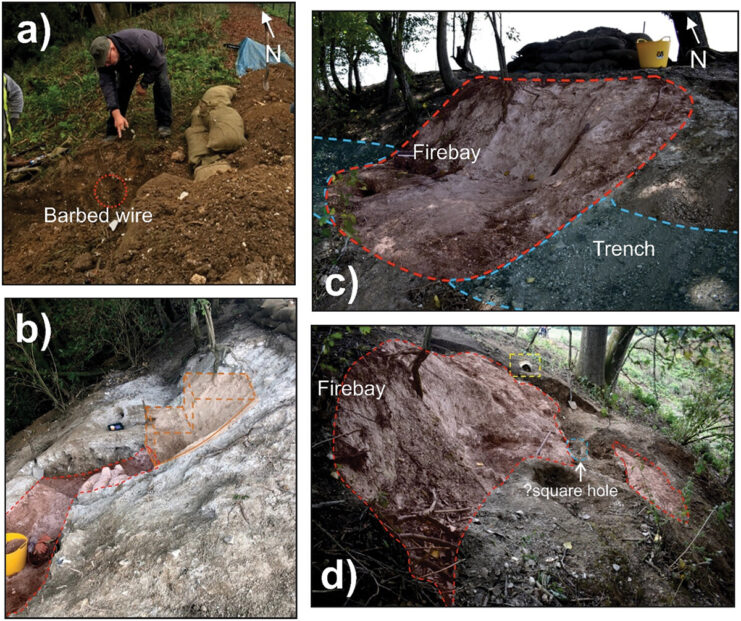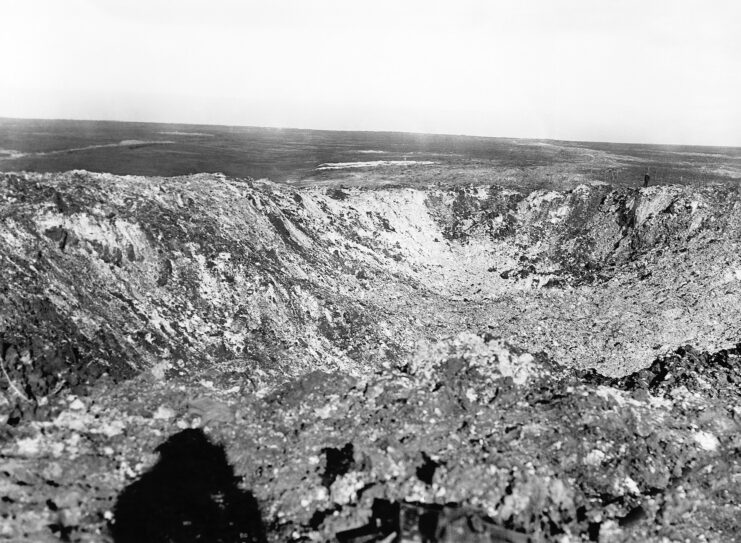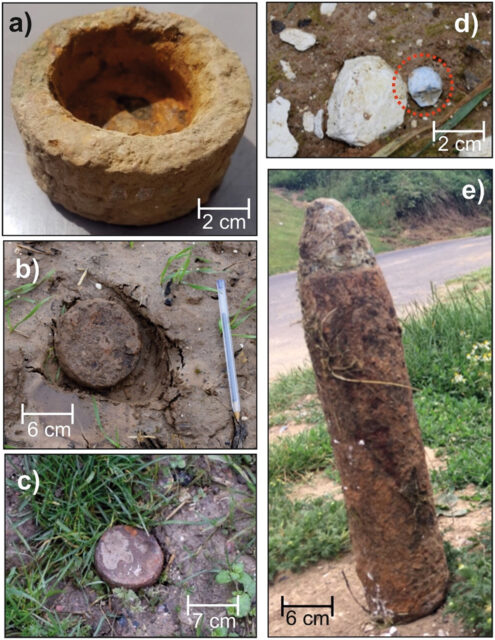Study Reveals New Details About How the British Gave the Germans the Advantage on the Somme
A study recently published in the Journal of Conflict Archaeology is providing new insights into the failed British advance at the Hawthorn Ridge Redoubt on the first day of the Battle of the Somme. The First World War battle was among the deadliest of the conflict, and the findings presented in the paper show a mine detonation 10 minutes before the whistle sounded ultimately gave the Germans the upper hand.

The new study, titled A multidisciplinary scientific investigation of the 1916 Hawthorn Mine Crater, Beaumont Hamel, Somme, Northern France, saw the team, led by experts from Keele University, gain access to the privately-owned Hawthorn Ridge mine crater. Through the use of drones and mapping and sonar technology, they were able to properly examine the site and learn more about the disastrous British advance on July 1, 1916.
The Hawthorn Ridge Redoubt was a German field fortification near the French village of Beaumont-Hamel, on the Somme. It was erected after the Battle of Albert in September 1914 and was increasingly fortified as the fighting on the Western Front intensified.
Prior to the launch of the Battle of the Somme, the British Army’s 252nd Tunnelling Company hand-dug a tunnel beneath the German position and loaded it with munitions, with 19 mines totaling 40,000 pounds being buried across the area.
On the morning of July 1, 1916, 10 minutes before the whistle blew to kick off the fighting, one of the mines was detonated. While the intention was to protect infantrymen from falling debris and allow them to easily cross No Man’s Land, the move was a major blunder. Not only did it give the Germans a heads up about the incoming assault, it also gave them enough time to move men to the rim of the newly-formed crater, who shot at the advancing troops of the 29th Division, VIII Corps.

The fighting of the first day of the Battle of the Somme proved deadly for the British, with over 19,000 killed. The Germans wound up incorporating the crater into their defensive fortifications at the Hawthorn Ridge Redoubt, establishing a sniper station and an observation post.
After suffering the devastating loss at the Hawthorn Ridge Redoubt, the British tunneled beneath the crater and refilled the mine with more explosives, which weren’t detonated until the Battle of Ancre in November 1916. This, along with a strong infantry and tank advance, allowed them to not only capture Beaumont-Hamel, but also take 2,000 German prisoners of war (POWs).
“The Germans had quickly mastered the art of capturing craters and used this to their advantage,” Prof. Peter Doyle, a military historian at Goldsmiths, University of London and a member of the research team, said in a release shared by Keele University. “Though they lost many men in the initial blast, the crater became a part of the German front line, meaning that the chance to break through the line here was lost.
“Our study has provided new evidence of the strongpoint the Germans built from the captured crater in the middle of no man’s land that doomed the British attack to failure,” he added. “This reinforces the idea that blowing the mine 10 minutes early was a very bad idea.
Speaking with Forbes, Doyle said that this incident proved to the British “that there was no need to fire mines so early,” influencing their actions during the Battle of Messines the following June.

The team behind the study found many artifacts at the Hawthorn Ridge Redoubt mine crater, including an unexploded British shrapnel artillery shell with its time-fuse still intact, an empty ammunition box for a Vickers Machine Gun, and 27 impact holes from Allied-fired shells. However, the most interesting was evidence of a shallow tunnel that had been dug by the Germans after the crater had been secured.
“Using drones with imaging cameras, we were able to image remotely a probable sap or shallow tunnel to the northwest of the crater, showing the German mastery of no man’s land after the initial detonation,” Dr. Kris Wisniewski, a lecturer in forensic science at Keele University, stated in the media release.
More from us: WWII-Era Anti-Submarine Munitions, Smoke Devices Found Off Los Angeles Coast
The study and research, led by Keele University, involved the London South Bank University, Staffordshire University, Cotswold Archaeology, the Stoke-on-Trent Archaeology Service, Atlantic Technological University and Goldsmiths, University of London.
The post Study Reveals New Details About How the British Gave the Germans the Advantage on the Somme appeared first on warhistoryonline.
Study Reveals New Details About How the British Gave the Germans the Advantage on the Somme
Philippines Truth
Post a Comment
0 Comments